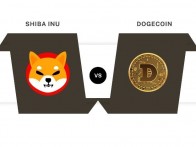
Holochain Part 2: How Ceptr Is Achieving What No Other Blockchain Was Able To
Oct 7, 2018, 12:20PM by Martin Banov
by Martin Banov
Ceptr, the underlying architecture of Holochain, is a unique attempt to build a new system while avoiding the pitfalls of its predecessors
This is the second article in a 2-part series on Holochain, a unique social dApp. In the first article we looked at Holo as a computational platform for distributed social applications that leverages the highly modular Holochain framework as the design space. In this second article, we looked at Ceptr, the underlying architecture of Holochain, as doing what Bitcoin, Ethereum and similar platform have not been able to do yet.
Bitcoin emerged as a reaction to the 2008 global financial crisis, as an experiment that set off a trend which brought distributed systems from the fringe into the mainstream. It brought to attention other relevant and related trends as well, and an overall ground for experimentation of how to re-design the global financial system (and other such critical infrastructure) in such a way that it is not as prone to systemic failures, corruptibility and Black Swan events, and is capable of adequately accommodating and organizing the levels of complexity we've reached in today's technological society.
Bitcoin and the underlying blockchain architecture it operates on, however, imply a somewhat strange notion of value (deriving from radical political libertarianism and the cypherpunk movement, among other things) as the energetic footprint (i.e., proof-of-work) of the "coin" (thus, BitCOIN). This does not really solve any of the problems it had been enthusiastically hailed as a cure-all solution to, and if anything, it has in a way replicated them much more effectively (forming a sort of crypto-government as an elusive and hidden political/market force, while inevitably moving towards increased centralization in critical aspects). While being an ingenious cryptographic construction, it is far from being capable of functioning as a complex adaptive system; its monolithic nature and necessitating of global, network-wide consensus hinder it from being able to reflect the non-linear dynamics and multi-dimensional nature of the real world.
Ethereum came about from such frustration with the limited capabilities of Bitcoin's rudimentary scripting language, which is insufficient when we enter the domain of such things as derivatives, financial instruments, smart contracts, DAOs and other such operations and arrangements. But Ethereum just equipped the blockchain with a distributed run-time environment (the EVM) for executing code residing on the blockchain. It did not change the basic underlying architecture.
It would be hard to make a more faithful reproduction of all of the problems of centralized money than Bitcoin. / Arthur Brock, Holo Founder & Acting CEO
Ceptr and the Ontology of a Distributed System
An initiative which only recently gained wider attention and popularity (and which had quietly been in the making a few years before Bitcoin's inception) is Ceptr - or more precisely, Holochain, one of the building block components of the broader concept of Ceptr (i.e., the mechanism by which multi-instance receptors synchronize with each other in Ceptr). Holo, the first application running on the Holochain framework, and their ICO (as Initial COMMUNITY Offering) has stirred quite a bit of interest as a more viable and flexible alternative to the blockchain in terms of distributed/decentralized applications.
Ceptr (from receptor) is an attempt to bootstrap a semantic, mashable and fully decentralized Internet. As such, it begins with entirely different assumptions than the prevailing blockchain paradigm and fundamentally different notions of what constitutes value and wealth in systems economies. It draws upon a range of ideas and philosophies (notably Gregory Bateson), and it does away with the notions of global consensus and singular blockchain massively replicated among peers, recording every event in a canonical ledger which constitutes the authoritative history of the order of events as having occurred.
Holochain leverages instead Distributed Hash Tables (DHTs) as the public space - similar to BitTorrent, but in a more generalized kind of way. Each application runs according to its programmed validation rules on its own DHT, while users keep their individual record of interactions/transactions as source chains (or hashchains) which they mutually audit and countersign, storing only what is specifically relevant to them. Another way of seeing distributed hApps is as scripts that are hooked into distributed hash table databases compiling data.
This focus on individual nodes/peers and their particular choices of how to define their roles and engagements and where to position themselves brings about a more pluralist, agent-centric ontology which is capable of forming agencies as an emergent property of the system (while nodes in a blockchain-based environment have no other choice but to serve the blockchain in the only way defined by those having designed it).
Currencies as Formalized Symbolic Systems for Shaping and Expressing Flows of Socio-Economic Activity
An important aspect of Ceptr and Holochain is how currencies are understood - as currents, flows or as they call it, "current-sees". That is, instead of subordinating everything to a single kind of order or single valid vantage point, as one-dimensional measurement of value (i.e., money), it conceives organization in a more organic way where different currents of social or economic activity flow through those engaged with them, gradually revealing their mutual inter-dependencies and correlations in their complex systems of relations, revealing those and bringing them to the foreground.
Currency (n.)
1650s, 'condition of flowing,' a sense now rare or obsolete, from Latin currens, present participle of currere 'to run' (from PIE root *kers- 'to run'). The notion of "state or fact of flowing from person to person" led to the senses 'continuity in public knowledge' (1722) and 'that which is current as a medium of exchange, money' (1729).
By making those more visible, it equips us with an extra dimension of awareness, raising our collective sense-making capacities able to deal with and reason about things we habitually fail to register in our everyday life and interactions. Ceptr is inspired by and designed as to reflect how living systems form, organize and perpetuate themselves as they evolve and transform to adapt to the context of different environments - how things go from simple building blocks (phonemes, molecules, etc.) to more sophisticated composites and complex fractal assemblies. How things (concepts, mechanisms, arrangements and their manifold multiplicities) get repurposed in different contexts and situations in a fluid world of dynamic, shifting interactions and functional configurations.
Or, as Deleuze and Guattari similarly describe the rhizome:
As a model for culture, the rhizome resists the organizational structure of the root-tree system which charts causality along chronological lines and looks for the original source of 'things' and looks towards the pinnacle or conclusion of those 'things.' A rhizome, on the other hand, is characterized by 'ceaselessly established connections between semiotic chains, organizations of power, and circumstances relative to the arts, sciences, and social struggles.'
The concept of which (rhizome) is outlined in A Thousand Plateaus so:
1 & 2. Principles of connection and heterogeneity: "...any point of a rhizome can be connected to any other, and must be";
3. Principle of multiplicity: it is only when the multiple is effectively treated as a substantive, "multiplicity", that it ceases to have any relation to the One;
4. Principle of asignifying rupture: a rhizome may be broken, but it will start up again on one of its old lines, or on new lines;
5 & 6. Principle of cartography and decalcomania: a rhizome is not amenable to any structural or generative model; it is a "map and not a tracing".
Ceptr is an effort to build such rhizomatic fabric that provokes active experimentation/trial-and-error and discovery on a collective level, gradually revealing and creating associative connections in a manner not unlike how Chinese hieroglyphs combine different reusable parts in various ways, which intuitively capture the nuance of intended meaning within the given context.

In his Introduction to Metaphysics, Henri Bergson comments on the above image, stying that at the minimum it keeps us in the concrete. Although no image can replace the sense of the passing of time, many images together, representing different things, may, by the overlapping of their actions, direct our attention to a certain moment of significance. If every image is given sufficient attention, and if we choose different enough images to converge, no single image would take over our attention, since there all the images are constantly competing for it. By doing so, that is, distributing our attention and consciousness, the image leads us to "gradually accustom consciousness to a particular and clearly defined disposition — that precisely which it must adopt in order to appear to itself as it really is, without any veil."
A Semantic Framework for Conceiving the Network's Expressive Capacities
Ceptr is a semantic framework, one occupying itself with meaning and intended to enable rich expressive capacities of what can be described to exist or called into being. The idea and its intention are not unlike the one of the semantic web, which Tim Berners-Lee (who coined the term) described as:
I have a dream for the Web [in which computers] become capable of analyzing all the data on the Web – the content, links, and transactions between people and computers. A "Semantic Web", which makes this possible, has yet to emerge, but when it does, the day-to-day mechanisms of trade, bureaucracy and our daily lives will be handled by machines talking to machines. The "intelligent agents" people have touted for ages will finally materialize.
Re-Thinking Value and How We Measure It
In that sense, Ceptr/Holochain doesn't focus on financial markets as they operate in our global market economy today, but takes a more 'Marxist', or post-monetary, stance on the matter (as in Marx's diagnostic critique of capitalism, where money inevitably become more important than what it could buy, lead to capital accumulation and centralization of power in the hands of few, as well as the metabolic rift, Marx's key conception of ecological crisis tendencies under capitalism) - seeing the singular language of money and finance (and what can be accessed through money) inefficient and incapable of adequately formulating and articulating the problems we're facing as complex, technological societies (as the solution, or spectrum of possible solutions, to a problem, is contained in the terms of how it is formulated as a valid problem).
Furthermore, today's richness and diversity of information, coupled with the expressive capacity of the language(s) we have makes it impossible to affix a quantitative-monetary value of measure (a universal-equivalent, in the Marxist terms) to most things (since most things in the world differ in kind, not quantity or degree).
Biomimicry
As an agent-cetric framework intended to run a wide range of composable and interoperable social applications, data in Holochain is understood to be relative, depending on who is observing what from where (similar to DAOstack's holographic consensus; the different angles observing the same revealing different aspects about it, giving it richer dimensionality). While the domain of Bitcoin deals with objects called UTXOs (Unspent Transaction Outputs) and Ethereum with accounts/balances (which can be either individual wallet addresses or autonomous smart contracts), Ceptr describes a more generally inclusive ontology capable of mapping out a much broader set of possible relations between different (peer-to-peer) distributed hApps and is composable in the possible combinations that can be configured with what is available (similarly, evolution has at its disposal the rich genetic material of many possible combinations to try, until some adapt and reproduce more successfully than others). It makes it possible for agents running those applications to translate between them, logically bridging previous gaps between different, disparate systems and domains.

When one runs hApps (holochain apps) locally, one can build API bridges between them that allows for flexibly composing between different chains/contexts under one's agency. Holochain/Ceptr aims to provide an unenclosable communication carrier allowing for experimenting with many different organizational models and approaches to building wealth, ways of measurement and feedback loops, resource flows, etc. such that it should in time condition an explosion of patterns of how we organize ourselves - many of which will fade away, but almost all of which are to be more efficient than the traditional command-and-control hierarchies of the industrial age.
Summary
Ceptr and its underlying architecture Holochain is among those unique and ambitious projects which have undertaken the building of their system after carefully diagnosing the design flaws of our existing systems.
This is the second article in a 2-part series on Holochain, a unique social dApp. In the first article we looked at Holo as a computational platform for distributed social applications that leverages the highly modular Holochain framework as the design space. In this second article, we looked at Ceptr as doing what Bitcoin, Ethereum and similar platform have not been able to do yet.
Disclaimer: information contained herein is provided without considering your personal circumstances, therefore should not be construed as financial advice, investment recommendation or an offer of, or solicitation for, any transactions in cryptocurrencies.

















